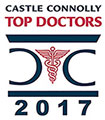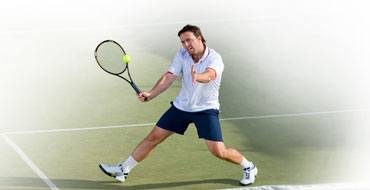Shoulder Fractures
A fracture is a break in the bone that commonly occurs as a result of injury, such as a fall or a direct blow to the shoulder. Shoulder joint is the most flexible joint of the body. It allows different motions of the hands making it possible for us to do a vast array of different activities. However its flexibility makes it more prone to injuries. The type of shoulder fracture depends of the age of the patients. Clavicle fractures are more common in children. A fracture of the upper part of the arm (proximal humerus) is more common in elderly individuals and its frequency increases with age.
Clavicle fractures
A clavicle fracture, also called broken collarbone is a common fracture that happens to people of all ages. The collarbone, also called the clavicle, is the bone that connects your sternum or breastbone to your shoulder.
Causes
A broken collarbone normally occurs after a fall onto the shoulder or a motor vehicle accident. The most common sports associated with clavicle fractures include football, hockey, and skiing.
Symptoms
broken collarbone most often causes pain, swelling and bruising over the collarbone. Pain increases with shoulder movement. Your shoulder may be slumped downward and forward. You may also have a bump around the area of the break. You may hear a grinding sound when you try to raise your arm.
Diagnosis
To diagnose a broken collarbone, your doctor will take a brief history, about the injury, and perform a physical examination of your shoulder. An X-ray of the clavicle is taken to identify the location of the fracture. Your doctor may also recommend a computerized tomography (CT) scan in some cases.
Conservative Treatment Options
Most broken collarbones heal without a surgery. An arm sling may support the arm and hold the bones in their normal position. You may also be given pain medications to relieve the pain. After your pain reduces your doctor may recommend gentle shoulder and elbow exercises to minimize stiffness and weakness in your shoulder. Follow up with your doctor until your fracture heals.
Surgery
Surgery may be required in case of displaced fractures. Surgery is performed to re-align the fractured ends and stabilize them during healing. Surgery often involves use of pins or plates and screws to maintain proper position of the bone during healing.
Proximal Humerus Fractures
Humerus is the upper arm bone and it forms two joints – shoulder joint and elbow joint. The proximal humerus refers to the upper end of the arm bone, which forms shoulder joint.
Causes
Fractures of proximal humerus are common in elderly individuals, suffering from osteoporosis. Fractures may be caused by traumatic injuries such as a fall on outstretched hand, from greater heights or motor vehicle accidents. In younger individuals a severe trauma can cause these fractures.
Proximal humerus fractures can be categorized into 4 groups:
- Greater tuberosity fractures: Greater tuberosity is the insertion site for attachment of rotator cuff tendons. Greater tuberosity fractures are less common and are seen in cases of shoulder dislocations and in those with osteoporosis
- Lesser tuberosity fractures: These fractures often caused by posterior shoulder dislocations or traumatic muscle contractions by electrical shock or convulsions. If left untreated, these fractures cause subscapularis muscle (stabilizer and mobilizer muscle) deficiency and requires a major muscle transfer procedure
- Surgical neck fractures: Fractures of the surgical neck are most common in patients with osteoporotic bone. These fractures also damage the axillary nerve that carries sensory impulses to the shoulder
- Humeral head fractures: Humeral head fractures are very often in elderly individuals and chances are more in those with osteoporotic bone. These fractures occur in younger individuals by significant trauma whereas a mild traumatic injury can cause fracture in elderly individuals with osteoporosis
In addition to above, another type of proximal humerus fractures is two, three, and four part fractures, a fracture that cause multiple fragmentation of the proximal humerus.
Symptoms
Patients with proximal humerus fracture experience severe pain, swelling, and restricted motion of the shoulder.
Diagnosis
Proximal humerus fracture is diagnosed by physical examination, X-ray of the affected area and/or computerized tomography (CT) scan.
Conservative Treatment Options
Most proximal humerus fractures are minimally displaced and can be treated with conservative approaches such as use of sling to immobilize and early physical therapy to improve the functional outcome.
Surgery
Surgery may be necessary in displaced fractures. The multiple fragments are fixed with plates, screws, or pins and in severe cases a shoulder replacement surgery is performed.
Scapula Fracture
Scapular fractures are uncommon but do occur and require a large amount of force to fracture. They are usually the result of intense trauma, such as a high speed motor vehicle accident or a fall from height onto one’s back. They can also occur from a fall on an outstretched arm if the humeral head impacts on the glenoid cavity.
Symptoms
Symptoms of a scapular fracture can include the following:
- Pain: Usually severe and immediate following injury to the scapula
- Swelling: The scapular area quickly swells following the injury
- Bruising: Bruising occurs soon after injury
- Impaired Mobility: Decreased range of motion of the joint occurs, often with inability to straighten the arm
- Numbness: Numbness, tingling, or coldness of the hand and forearm can occur if blood supply is impaired or nerves are injured
- Popping Sound: A cracking or popping sound, also referred to as crepitus, can often be heard or felt at the time of the fracture
Diagnosis
Scapular Fractures should be evaluated by an Orthopaedic surgeon for proper diagnosis and treatment.
Conservative Treatment Options
Most scapular fractures are not significantly displaced due to the strong supporting soft tissue structures surrounding it. Therefore, a majority of scapular fractures are treated conservatively and with early motion to reduce the risk of stiffness and will usually heal without affecting shoulder movement. The conservative treatment options include:
- Immobilization: A sling is used for comfort and to support the shoulder to allow healing to take place. This is usually worn about 3-6 weeks depending on the type of fracture and
- Prescription Medications: Pain medications will be prescribed for your comfort during the healing process
- Physical Therapy: Early progressive range of motion exercises is essential in restoring full shoulder function. Your physician will most likely refer you to a Physical Therapist for instruction on proper exercises and early motion of the shoulder to prevent complications
Surgery
Fractures of the scapula involving the neck or glenoid or with severe displacement have been associated with poor outcomes when treated non-operatively. Scapula fracture repair can be performed through a minimally invasive approach. Minimally invasive ORIF (open reduction internal fixation) surgery uses smaller incisions than a traditional “open” surgery. Minimally invasive incisions are limited to where surgical plates will be placed instead of a traditional incision which can be large. The benefits of minimally invasive surgery include smaller incisions, faster healing, a more rapid recovery, and less scarring.











 Shoulder
Shoulder
